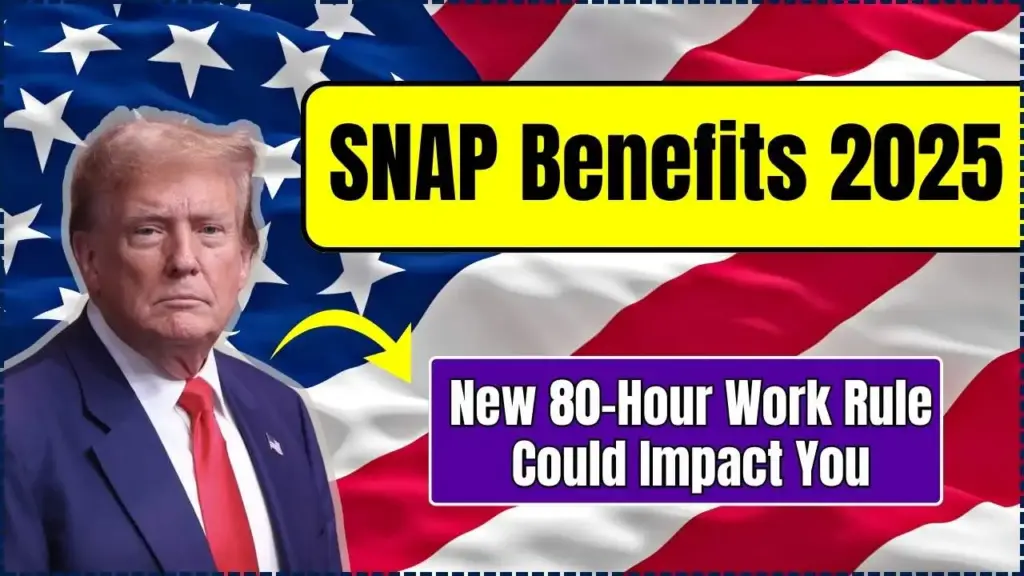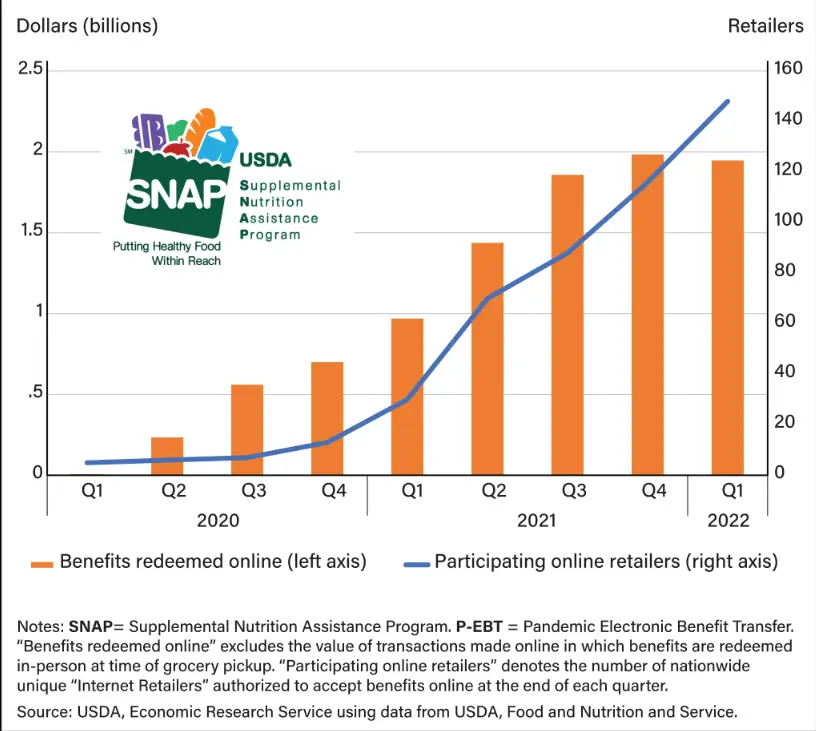Beginning in late 2025, millions of Supplemental Nutrition Assistance Program (SNAP) recipients across the United States will face stricter eligibility requirements. A new 80-hour-per-month work rule will require able-bodied adults without dependents to show consistent participation in work, training, or volunteer activities to continue receiving food assistance.

SNAP Benefits 2025
| Key Fact | Detail / Statistic |
|---|---|
| New work requirement | 80 hours of work, training, or volunteering per month |
| Time limit for non-compliance | 3 months of benefits in a 36-month period |
| Implementation deadline | November 1, 2025 |
| Legislation | One Big Beautiful Bill Act of 2025 |
The Policy Shift
Expanding the 80-Hour Rule
The U.S. Department of Agriculture (USDA) confirmed that the revised regulation under the One Big Beautiful Bill Act of 2025 (OBBB) extends the long-standing “Able-Bodied Adults Without Dependents” (ABAWD) rule.
Under the change, individuals aged 18 to 64 without dependent children must now demonstrate at least 80 hours of monthly work or training. Previously, the requirement applied mainly to adults up to age 52. The updated policy will phase in nationally by November 2025, with states responsible for verification and enforcement.
“Our goal is to ensure that SNAP supports employable adults in moving toward long-term economic stability,” said Cindy Long, Administrator of the USDA’s Food and Nutrition Service, in an October briefing.
Historical Context
SNAP work rules trace back to the 1996 Personal Responsibility and Work Opportunity Reconciliation Act, signed by President Bill Clinton. That law introduced time limits and employment conditions for childless adults receiving benefits.
While states could waive requirements in areas of high unemployment, the pandemic prompted nationwide suspensions in 2020. The 2025 reform marks the most significant tightening of those standards in nearly a decade.

Who Is Affected
Definition of an ABAWD
An able-bodied adult without dependents is defined by USDA as a person who:
- Is 18–64 years old;
- Is not disabled;
- Does not live with a child under 18; and
- Is not otherwise exempt under federal or state rules.
Exemptions remain for individuals who are pregnant, medically unfit for work, homeless, or veterans, as well as for those under 25 who were in foster care. States may apply for waivers in areas where unemployment exceeds 10 percent.
Compliance and Enforcement
How the 80-Hour Rule Works
To remain eligible, participants must complete at least 80 hours each month in one or more qualifying activities:
- Paid employment;
- Job-training or education programs;
- Unpaid community service; or
- Volunteering at approved non-profits.
Those who fail to meet the standard risk losing benefits after three consecutive months, unless they later regain compliance or qualify for an exemption.
Economic and Social Context
The rule arrives amid a tight U.S. labor market. According to the Bureau of Labor Statistics, the national unemployment rate stood at 4.0 percent in September 2025, but job availability and transportation access vary sharply by region.
Economists at the Brookings Institution note that while many ABAWDs work intermittently, their employment is often unstable. “People on SNAP are not refusing to work—they’re navigating unpredictable hours and low wages,” said Dr. Elena Perez, a Brookings senior fellow specializing in labor policy.
Food policy groups warn that the rule could increase food insecurity. A 2024 Urban Institute study found that nearly one-third of adults at risk of losing SNAP benefits already work but fall short of the 80-hour mark due to fluctuating schedules or caregiving duties.
Criticism and Concerns
Advocates argue that the rule may penalize low-income adults who struggle with irregular employment. Feeding America, the country’s largest hunger-relief organization, cautioned that administrative complexity could push people off benefits even when they are technically eligible.
“Paperwork and verification, not unwillingness to work, will likely drive most benefit losses,” said Claire Babineaux-Fontenot, Feeding America’s chief executive officer, in a recent statement.
Others contend that local job markets in rural areas or small towns may not provide consistent 20-hour-per-week opportunities, leaving many ABAWDs unable to comply despite effort.
Supporters’ View
Supporters of the new rule, including several Republican lawmakers, say the requirement promotes accountability and workforce participation.
“This reform restores fairness to the safety net by encouraging work for those who can work,” said Senator John Thune (R-S.D.), one of the bill’s sponsors.
They also argue that the rule could reduce federal spending on SNAP, which reached roughly $127 billion in 2024, according to the Congressional Budget Office.

Real-World Impact: A Case Scenario
Consider a 30-year-old part-time retail worker in Ohio who averages 70 hours of paid work each month and volunteers 10 hours at a food pantry. Under the 2025 rule, she would remain eligible. But if store hours are cut and her volunteer work lapses, she could lose benefits after three months unless she quickly re-enrolls in an approved training program.
This example illustrates how inconsistent work hours, rather than unwillingness, may drive eligibility loss.
State Responsibilities and Variation
Because SNAP is administered jointly by federal and state governments, states must revise systems to track compliance, issue notices, and process exemptions.
Some states—such as California, New York, and Illinois—are exploring partial waivers for high-unemployment counties. Others, like Texas and Florida, plan full enforcement beginning November 1, 2025.
Related Links
What We Know About IRS $1,390 Direct Payments in 2025 – Eligibility and Key Facts
It’s Official: Federal Shutdown Puts $996 in Benefits at Risk for Over a Million Americans
What Happens Next
The USDA is expected to release final operational guidance to state agencies by mid-2025. Policy analysts anticipate that up to 2.4 million recipients could lose or see reduced benefits, though precise numbers will depend on state implementation and local labor markets.
Non-profit organizations are urging states to expand access to SNAP Employment and Training programs, which can count toward the 80-hour threshold.
Looking Ahead
Implementation of the new SNAP rule will test how states balance employment incentives with food security needs. As the November 2025 deadline approaches, policymakers and advocates alike are preparing for a national debate on how best to define “able to work” in a changing labor market.
FAQ About SNAP Benefits 2025
1. Does part-time work count toward the 80 hours?
Yes. Paid part-time work, self-employment, or a mix of work and volunteering can satisfy the requirement if properly documented.
2. How are hours verified?
States may require pay stubs, attendance logs, or employer verification forms. Many are transitioning to digital submission systems.
3. What if someone becomes ill or loses a job?
Temporary “good cause” exemptions exist for illness, caregiving emergencies, or job loss not due to voluntary quit.





